The city of Lahore, the cultural and historical hub of Pakistan, is home to numerous architectural wonders that represent the rich legacy of the region. Among these treasures, the Lahore Fort and the Shalamar Gardens stand out as remarkable examples of Mughal architecture and landscape design. In 1981, UNESCO recognized the significance of these sites and inscribed them in the list of World Heritage Sites. This article aims to provide an in-depth understanding of these gems, their historical background, architectural features, and cultural significance.
Lahore Fort
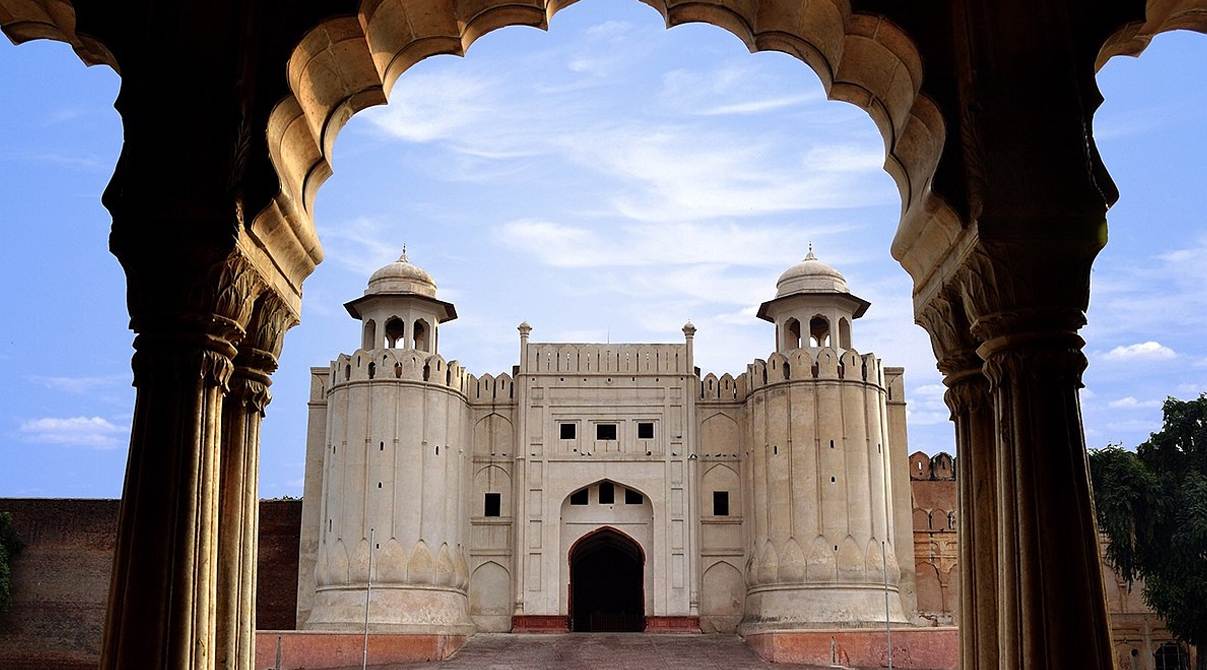
Historical Background
The Lahore Fort, also known as the Shahi Qila, stands majestically in the heart of Lahore, Pakistan, showcasing the rich history and diverse culture of the region. This UNESCO World Heritage Site has a fascinating historical background that dates back to the 11th century, with various dynasties leaving their mark on the fort over time.
Originally constructed by Malik Ayaz, the then-Governor of Lahore under Mahmud of Ghazni, the fort was further fortified by subsequent rulers, such as Mughal Emperor Akbar, who added robust defenses and splendid architecture in the 16th century. The fort’s famous structures, like the Alamgiri Gate, Sheesh Mahal, and Diwan-i-Khas, demonstrate the artistic prowess and architectural ingenuity of the Mughal Empire.
Throughout its history, the Lahore Fort has been a symbol of power and a hub of political activity. It has seen the rise and fall of empires, from the Ghaznavids and Mughals to the Sikhs and British colonialists. Each era has left its unique stamp on the fort, resulting in a complex tapestry of architectural styles and cultural influences.
Today, the Lahore Fort serves as a testament to the region’s vibrant past, drawing visitors from around the world to explore its stunning halls and experience the rich heritage of South Asia. By immersing themselves in the fort’s captivating history, tourists can gain a deeper understanding of the political, cultural, and artistic forces that shaped this remarkable monument.
Development and Contributions of Different Ruling Dynasties

The Lahore Fort, also known as the Shahi Qila, is an iconic symbol of Mughal architecture and a testament to the rich history of Lahore, Pakistan. This imposing fortress, spread over 20 hectares, boasts a diverse architectural heritage, reflecting the numerous rulers and eras it has witnessed.
Origins
The origins of the Lahore Fort can be traced back to antiquity, with historical records and excavations suggesting its existence since the 11th century. The first concrete evidence of the fort’s existence dates back to the 11th century during the rule of Mahmud of Ghazni when Governor Malik Ayaz constructed it. Over the centuries, the fort changed hands numerous times, undergoing alterations and additions with each new ruler.
Golden Age
The Lahore Fort’s golden age came during the Mughal Empire, beginning with Emperor Akbar in the 16th century. Akbar extensively rebuilt and expanded the fort, employing a synthesis of Persian, Central Asian, and Indian architectural styles. The fort’s iconic Alamgiri Gate, a testament to Mughal grandeur, was built by Emperor Aurangzeb in 1673. This era also witnessed the construction of the Sheesh Mahal (Mirror Palace), Diwan-i-Aam (Hall of Public Audience), and Diwan-i-Khas (Hall of Private Audience), among other prominent structures.
Related: 10 Residential Societies Worth Considering in Lahore
Sikh Domination
In the 18th century, the decline of the Mughal Empire allowed regional powers to gain control of Lahore, leading to a period of instability for the fort. The Sikhs, led by Maharaja Ranjit Singh, captured the city in 1799, and the Lahore Fort became a symbol of their newfound power. The Sikhs added several structures to the fort, including the Moti Masjid (Pearl Mosque) and the Hazuri Bagh Baradari.
The British Era
The British East India Company annexed Punjab in 1849, and the Lahore Fort fell under British control. They used the fort as a military garrison and made significant alterations to its structure, including the demolition of some Mughal-era buildings. After Pakistan gained independence in 1947, the Lahore Fort was repurposed as a historical monument and museum.
The Lahore Fort, with its extensive history and intricate architectural legacy, remains a symbol of the region’s past and a window into the diverse cultures that have shaped it. Today, the fort is a UNESCO World Heritage site and continues to draw visitors from around the world, seeking to experience the grandeur and the stories that echo through its walls.
Architectural highlights
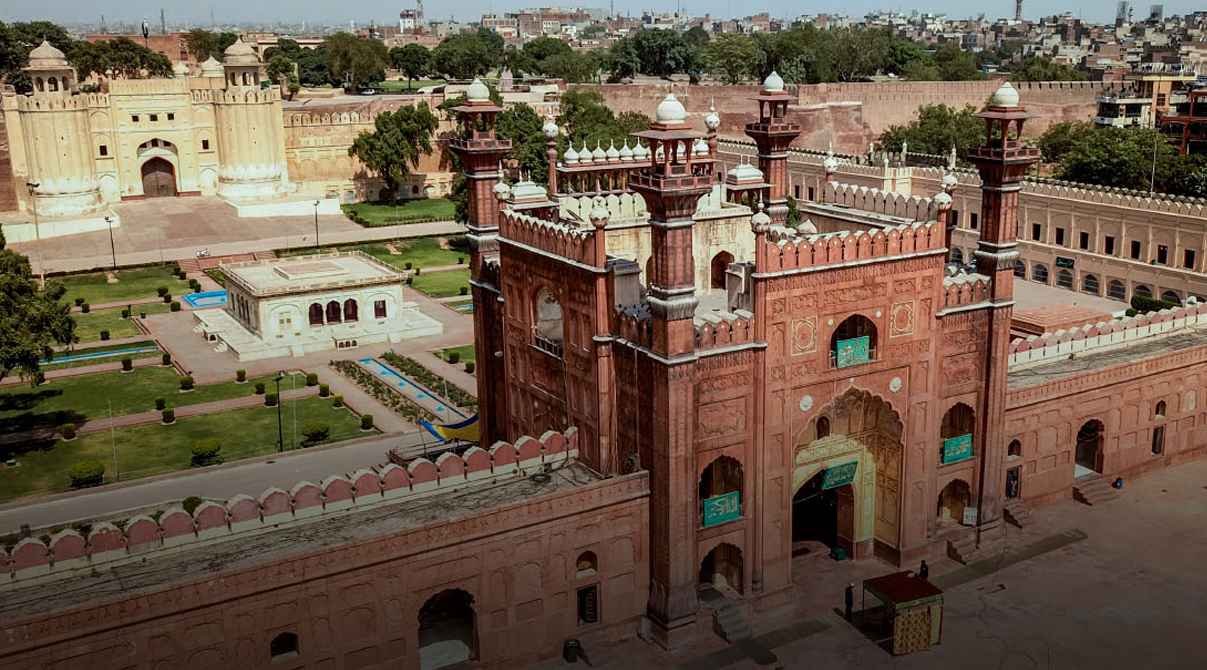
The Lahore Fort spans over 20 hectares and is surrounded by a massive wall, which is fortified by 13 gates. The architectural style of the fort is a fusion of Islamic, Persian, and Indian influences, reflecting the diverse history and artistic preferences of its various rulers. Some of the notable structures within the fort include:
Sheesh Mahal (Palace of Mirrors)
The Sheesh Mahal, or the Palace of Mirrors, is one of the most iconic structures within Lahore Fort. Built during the reign of Emperor Shah Jahan in the mid-17th century, the palace is famous for its intricate mirror work and detailed frescoes. The palace’s walls and ceilings are adorned with thousands of reflective glass tiles, creating a mesmerizing effect when light enters the room. These tiles, along with the colorful frescoes, depict various scenes from Persian and Indian mythology, showcasing the artistic brilliance of the Mughal era.
Alamgiri Gate
Alamgiri Gate, built by Emperor Aurangzeb in 1673, serves as the main entrance to Lahore Fort. This majestic gate is an excellent example of Mughal architecture, featuring intricate carvings, calligraphy, and geometric patterns. The red sandstone structure is topped with white marble domes, creating a striking contrast that adds to its beauty. The Alamgiri Gate is also notable for its defensive features, including a moat and multiple bastions.
Naulakha Pavilion
The Naulakha Pavilion is a stunning jewel-like structure that was built during Shah Jahan’s reign. It is named after the cost of construction (nine lakh rupees) and is known for its intricate white marble work, which includes delicate inlay work and carved jharokhas (overhanging balconies). The pavilion exemplifies the Mughal era’s penchant for extravagance and is considered one of the most ornate structures within Lahore Fort.
Diwan-i-Aam and Diwan-i-Khas
The Diwan-i-Aam (Hall of Public Audience) and Diwan-i-Khas (Hall of Private Audience) were used by Mughal emperors to address their subjects and hold private meetings, respectively. Both halls showcase impressive architectural features, including red sandstone walls, carved marble pillars, and arched entrances. The Diwan-i-Khas is particularly notable for its intricate inlay work, featuring semi-precious stones.
Moti Masjid
The Moti Masjid, or Pearl Mosque, is another stunning example of Mughal architecture within Lahore Fort. Built by Emperor Shah Jahan in 1645, the mosque features a pristine white marble façade, which gives it the appearance of a pearl. The mosque’s interior is adorned with intricate frescoes and calligraphy, creating a serene and spiritual atmosphere.
Jahangir’s Quadrangle
The Jahangir’s Quadrangle is a large, open courtyard surrounded by living quarters and administrative buildings. The quadrangle showcases a blend of Mughal and Persian architectural styles, featuring red sandstone walls, elegant archways, and decorative tile work. This area was used for various royal ceremonies and public events during the Mughal era, making it an essential part of the fort’s history.
Cultural Significance of Lahore Fort
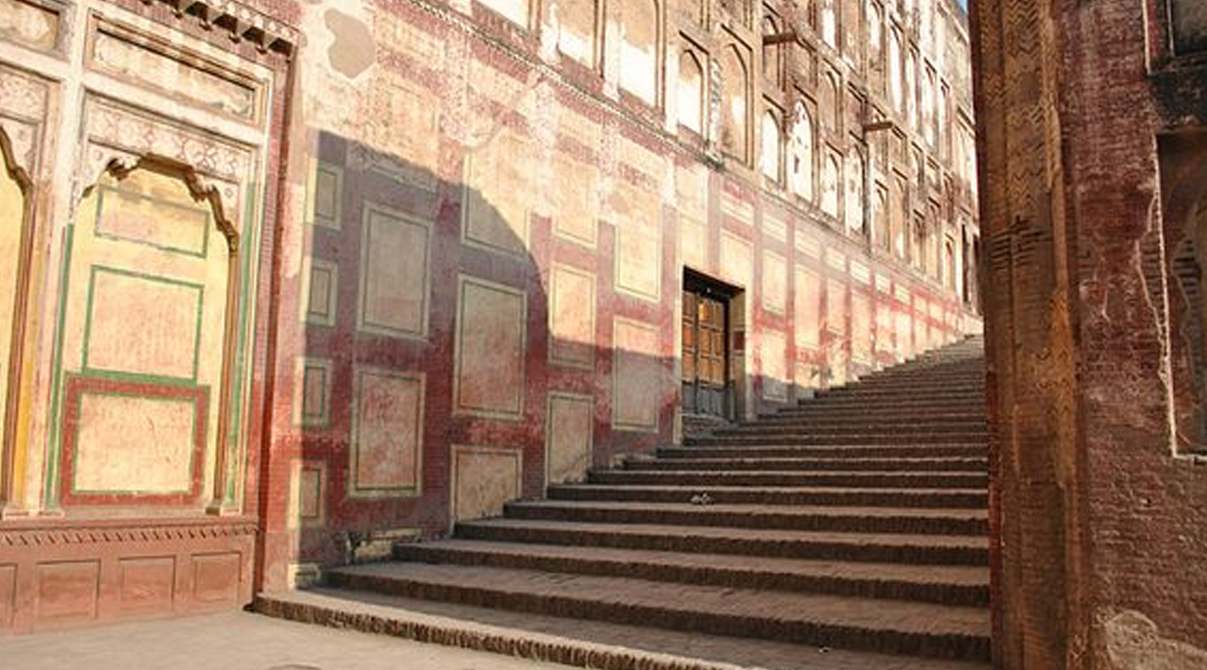
The Lahore Fort is an emblematic symbol of the rich cultural heritage of Lahore, Pakistan. With a history spanning over a thousand years, the fort has been a testament to the diverse civilizations that have ruled the region. As a UNESCO World Heritage Site, the fort represents the cultural significance of Lahore not only to Pakistan but also to the global community.
The architectural splendor of the fort reveals the artistic prowess of the Mughal era, reflecting a blend of Islamic, Persian, and Hindu influences. Its grandeur is evident in the intricate motifs, frescoes, and carvings that adorn its walls, giving it a timeless aesthetic appeal. The fort has served as a residence for many notable figures, such as the Mughal emperors Akbar, Jahangir, and Shah Jahan, further elevating its cultural significance.
The Lahore Fort is also a symbol of resilience, having withstood countless invasions, wars, and natural disasters throughout its history. It has been a silent witness to the rise and fall of various dynasties, making it an invaluable repository of collective memory and historical narratives. As a living testimony to the cultural evolution of Lahore, the fort is a vital link between the city’s past and present.
The fort’s cultural significance extends beyond its architectural marvels; it is also a thriving center for performing arts, festivals, and community events, preserving traditional art forms and fostering cultural exchange. The fort is not just a monument; it is a dynamic space where the past and the present coexist, embodying the resilience and cultural richness of Lahore and its people. As a vital landmark, the Lahore Fort serves as a constant reminder of the city’s unique history and its determination to preserve its cultural legacy for future generations.
Fusion of Different Artistic Influences
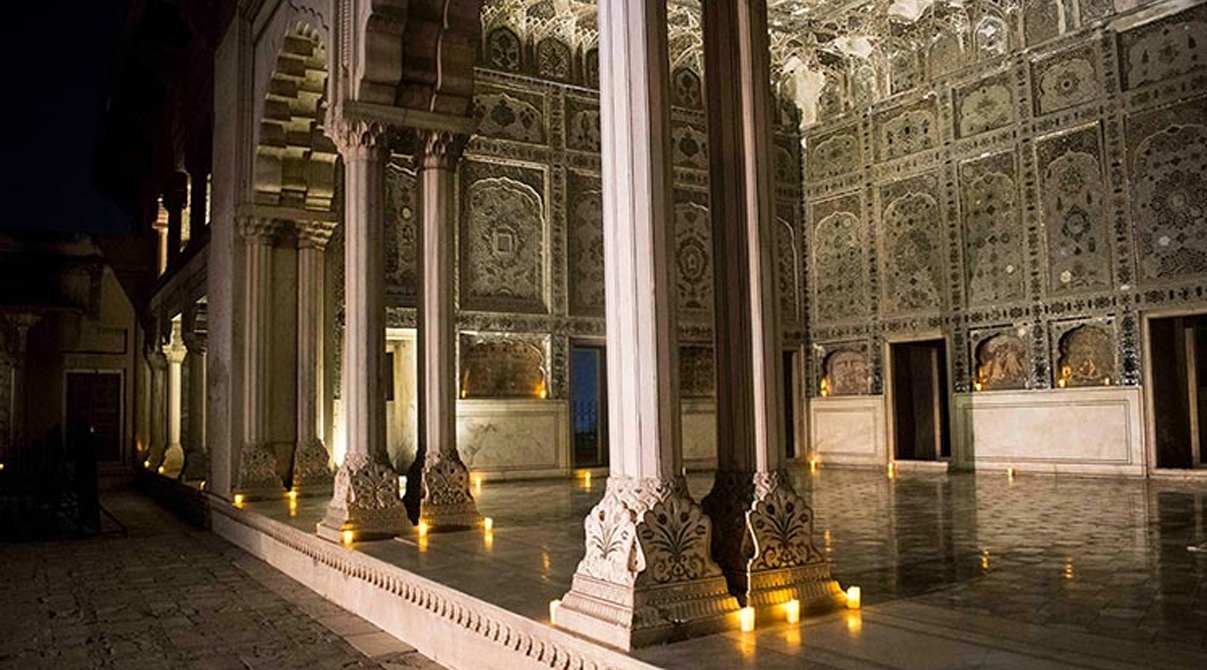
The Lahore Fort, a historical masterpiece located in the heart of Lahore, Pakistan, is a living testament to the fusion of diverse artistic influences spanning centuries. The fort has been ruled and inhabited by various dynasties, including the Mughals, Sikhs, and British, each of which has left an indelible mark on the fort’s architecture and design.
The Mughal influence is particularly prominent, as they were responsible for the majority of the fort’s construction. The Mughal emperors brought with them Persian and Central Asian artistic traditions, which are evident in the fort’s intricate calligraphy, delicate frescoes, and stunning tile work. The opulent Sheesh Mahal (Mirror Palace) exemplifies this influence, boasting an interior adorned with thousands of convex mirrors and intricate glass mosaics that create a mesmerizing kaleidoscope of light.
The Sikhs, who ruled the region in the early 19th century, also left their mark on the Lahore Fort. They introduced Hindu and Punjabi artistic elements, such as the elegant Gurdwara Dera Sahib with its ornate frescoes and gold-plated domes. The British, during their colonial rule, added Gothic and Victorian architectural features, infusing the fort with a unique fusion of Eastern and Western styles.
This amalgamation of artistic influences at Lahore Fort showcases the rich cultural tapestry woven through centuries of diverse rulers, creating a fascinating blend of architectural splendor that has endured the test of time.
Preservation Efforts, Challenges and Restoration projects
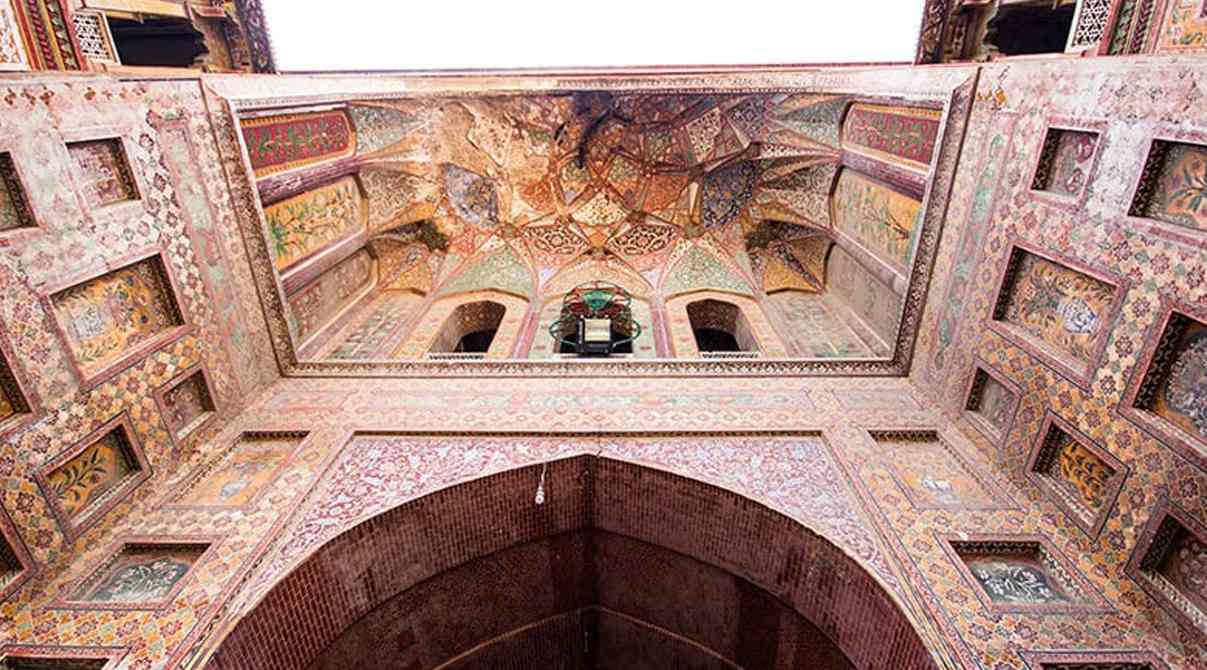
The Lahore Fort, a symbol of Pakistan’s rich heritage, has faced numerous threats over the years, necessitating various preservation and restoration projects. These efforts, undertaken in collaboration with organizations like the Aga Khan Trust for Culture (AKTC) and the World Monuments Fund (WMF), have focused on restoring key structures such as the Sheesh Mahal, Alamgiri Gate, and the Picture Wall. These initiatives have not only preserved the architectural integrity of the fort but also raised cultural and historical awareness.
However, the fort continues to face challenges, including urbanization, illegal nearby constructions, environmental damage, and inadequate funding. These issues have threatened the fort’s structural stability and aesthetic appeal, making preservation efforts more complex. Despite these challenges, restoration projects have had a positive impact. The restoration of the Picture Wall, for instance, has highlighted the Mughal era’s artistic prowess, leading to increased tourism and economic benefits for the local community. These efforts have also enabled the documentation and archiving of historical and architectural data, crucial for future preservation initiatives.
Related: The Wonders of World – Lahore Fort
The ongoing challenge of preserving the Lahore Fort requires collaborative efforts between local and international organizations. Consequently, increased public awareness is crucial. The impact of restoration projects is evident in the revitalized structures, leading to a growing interest in the fort’s history and cultural significance. Therefore, continued efforts are essential to safeguard the Lahore Fort for future generations. This ensures it remains a source of pride and a testament to Pakistan’s rich cultural legacy.
Shalamar Gardens
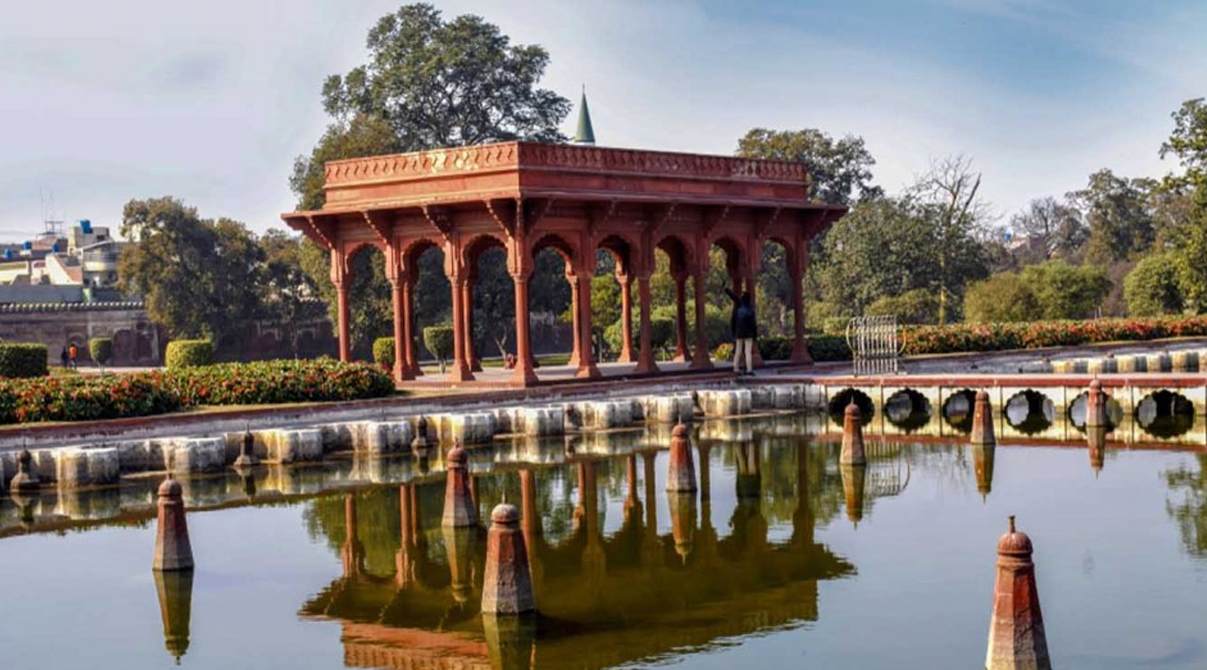
Historical Background of Shalamar Gardens
The Shalamar Gardens, also known as Shalimar Gardens, is a prime example of Mughal garden architecture. Located in Lahore, Pakistan, the Gardens were constructed during the reign of Emperor Shah Jahan, who is also known for commissioning the magnificent Taj Mahal in Agra, India. Construction of the Gardens commenced in 1641 and concluded in 1642, symbolizing Mughal grandeur and showcasing the artistic and architectural prowess of the era.
Persian architect Ali Mardan Khan meticulously designed the Shalamar Gardens, masterfully integrating Persian and Islamic garden design principles to create a sublime space where nature and architecture harmoniously blend.
The primary purpose of Shalamar Gardens was to serve as a private retreat and pleasure garden for the royal family. The Gardens, embodying a vision of paradise on earth, were designed according to the Mughal interpretation of “Charbagh” or “Four Gardens.” This concept, drawing inspiration from Persian and Islamic ideas of paradise, is a central theme in their layout. The layout of Shalamar Gardens is a geometrically precise arrangement of three descending terraces, each with its own unique character and purpose. The Gardens boasted a harmonious blend of natural beauty and human-made artistry, featuring intricate frescoes, marble pavilions, and exquisite fountains.
Role in Mughal Empire’s Leisure and Entertainment
Shalamar Gardens played a significant role in the leisure and entertainment activities of the Mughal Empire’s elite, particularly during the reign of Shah Jahan. The Gardens were not only a retreat for the royal family but also a venue for hosting extravagant celebrations, feasts, and performances. The Mughal court, renowned for its passion for music, dance, and poetry, found the Gardens an ideal setting for these artistic pursuits.
Basically, the three terraces of the Gardens served a specific purpose in terms of leisure and entertainment. The “Farah Baksh,” the uppermost terrace, was exclusively for the emperor and his closest companions. Thus, it boasted elegant pavilions and the splendid Shish Mahal, or Palace of Mirrors, adorned with intricate mirrorwork and glass mosaics. The “Faiz Baksh,” the middle terrace, served as the venue for lavish banquets and gatherings for visiting dignitaries. Finally, the lower terrace, known as the “Hayat Baksh,” was a sprawling garden space designed for strolling, picnicking, and enjoying the beauty of nature.
In other words, the historical background of Shalamar Gardens reveals its importance as a symbol of Mughal grandeur and its role in the leisure and entertainment activities of the Mughal Empire’s elite. The Gardens’ architectural splendor, lush landscaping, and unique features made it a favored destination for the royal family and a testament to the Empire’s commitment to beauty, art, and culture.
Architectural Highlights of Shalamar Gardens

Layout and Design
The Shalamar Gardens, also a UNESCO World Heritage Site, are located in Lahore, Pakistan. Emperor Shah Jahan built these beautiful Mughal gardens in 1641, blending Persian, Central Asian, and Indian architectural styles. Spanning 16 hectares, the gardens feature three distinct terraces: the upper terrace (Farah Baksh), the central terrace (Faiz Baksh), and the lower terrace (Hayat Baksh).
The royal family exclusively used the upper terrace, while the emperor’s courtiers and other visitors frequented the central and lower terraces. A symmetrical layout characterizes the gardens, centered around an axis that runs through the entire complex. This axis features a series of water channels, fountains, and pools, creating a serene and refreshing ambiance. Ornamental gates and bastions punctuate the high brick wall enclosing the gardens.
Hydraulic Engineering
The hydraulic engineering at Shalamar Gardens is a testament to the Mughals’ ingenuity and advanced understanding of water management. The Shah Nahar canal, specifically constructed to channel water from the Ravi River, serves as the primary water source for the gardens. The canal’s water flows into the gardens through a series of terracotta pipes, sluice gates, and water channels.
A marvel of engineering, the gardens’ water system relies on gravity to maintain a constant flow. The water channels in the upper terrace are the highest, allowing water to cascade down through the lower terraces, ensuring a consistent supply of water to the entire complex. This ingenious system not only provides irrigation for the lush vegetation but also powers the numerous fountains and water features throughout the gardens.
Fountains and Water Features
Shalamar Gardens boasts an incredible array of fountains and water features, symbolizing luxury and prosperity in the Mughal era. The gardens have, in fact, 410 fountains, with a majority concentrated in the central terrace. The fountains come in various shapes and sizes, ranging from simple spouts to ornate marble structures with intricate carvings.
Among the most iconic water features is the large marble cascade known as the Sawan Bhadun Pavilion. This grand structure consists of a series of steps with water channels and fountains, simulating the sound of falling rain. The water features at Shalamar Gardens not only create a soothing atmosphere but also serve as a testament to the Mughals’ mastery of hydraulic engineering.
Pavilions and Structures
A variety of pavilions and structures adorn the Shalamar Gardens, exemplifying the Mughal architectural style. Among the most notable is the Aiwan, a two-story pavilion located on the upper terrace. This pavilion features a central hall flanked by two smaller rooms, showcasing elaborate frescoes and intricate mirror work.
Other notable structures include the Diwan-e-Khas, a private audience hall for the emperor, and the Hammam, a royal bathhouse with marble floors and ornate decorations. The central terrace’s five pavilions, known as the ‘Panj Mahalat,’ each feature a unique architectural style, representing different regions of the Mughal Empire.
Horticultural Aspects of Shalamar Gardens

Significance of gardens in Mughal culture
Mughal culture has always cherished gardens, viewing them as symbols of paradise and earthly representations of heaven. Mughal emperors dedicated significant resources to design and create magnificent gardens for recreation, contemplation, and hosting royal events. Shalamar Gardens, also known as Shalimar Gardens, is one such example of Mughal landscape architecture. Commissioned by Emperor Shah Jahan in 1641, it is located in present-day Lahore, Pakistan, and is a UNESCO World Heritage Site. The layout and horticultural aspects of Shalamar Gardens reflect the Mughal affinity for natural beauty, symmetry, and symbolism.
Plant species and their symbolism
The designers of Shalamar Gardens based its layout on the Persian concept of Chahar Bagh (four gardens), symbolizing the Islamic vision of paradise, with four rivers dividing the garden into quadrants. The gardens host a diverse range of plant species, selected for both their aesthetic appeal and symbolic significance.
Some of the key plant species found in Shalamar Gardens include cypress trees, chinar trees, roses, jasmine, and fruit-bearing trees like oranges, pomegranates, and mangoes. Cypress trees, with their tall, slender form and evergreen foliage, symbolize eternity and immortality. Chinar trees, also known as Oriental plane trees, thrive natively in the region, earning reverence for their longevity and large, spreading canopies that offer ample shade. Mughal emperors, who favored roses, symbolize love and beauty with these flowers, while jasmine embodies purity and spirituality.
Garden designers chose fruit-bearing trees not only for their sustenance-providing ability but also for their symbolism. Oranges and pomegranates, for example, represent abundance and prosperity, while mangoes are a symbol of fertility and life.
Related: The Appealing Sikh Gurdwara in Lahore
Seasonal variations and their impact on garden aesthetics
The horticultural design of Shalamar Gardens takes into account the seasonal variations in the region, ensuring a captivating display of color and fragrance throughout the year. During spring, the gardens come alive with the vibrant hues of blooming flowers such as roses, jasmine, and narcissus. The warm summer months see the lush green foliage of the trees offering respite from the heat, while the chinar trees take center stage in autumn, as their leaves transform into a stunning palette of red, orange, and yellow.
Winter, though relatively mild in Lahore, brings a certain tranquility to the gardens, with the evergreen cypress trees standing tall against the backdrop of a crisp blue sky. Seasonal variations in Shalamar Gardens not only enhance its aesthetic appeal but also serve as a testament to the Mughal emperors’ deep understanding and appreciation of nature’s cycles.
Preservation efforts, Challenges faced, and Restoration projects
Over the years the once magnificent Shalamar Gardens have faced significant degradation due to environmental, social, and political factors, leading to the implementation of preservation efforts, restoration projects, and confronting various challenges in the process.
Preservation efforts for Shalamar Gardens have been a collaborative initiative between the Government of Pakistan, UNESCO, and various international organizations. These efforts focus on the maintenance and conservation of the site’s structural integrity and artistic heritage, involving measures like regular inspections, monitoring of environmental impacts, and providing financial and technical support.
One of the primary challenges faced in the preservation of Shalamar Gardens is rapid urbanization. The encroachment of settlements around the site has led to increased pollution and structural damage. Additionally, the gardens have suffered from neglect and lack of proper maintenance, leading to the degradation of the intricate water system and the original frescoes.
To counter these challenges, several restoration projects have been launched. These projects focus on repairing the damaged structures, reviving the elaborate water system, and restoring the lush greenery that once graced the gardens. These efforts have been instrumental in breathing life back into the historic site and raising awareness about the significance of the cultural heritage.
The preservation and restoration of Shalamar Gardens are essential for safeguarding this invaluable piece of Mughal history. Despite facing numerous challenges, the collective efforts of local and international organizations have made significant strides in preserving the site and ensuring that future generations can continue to appreciate and learn from its timeless beauty.
Lahore Fort and Shalamar Gardens Recognized as UNESCO World Heritage Site
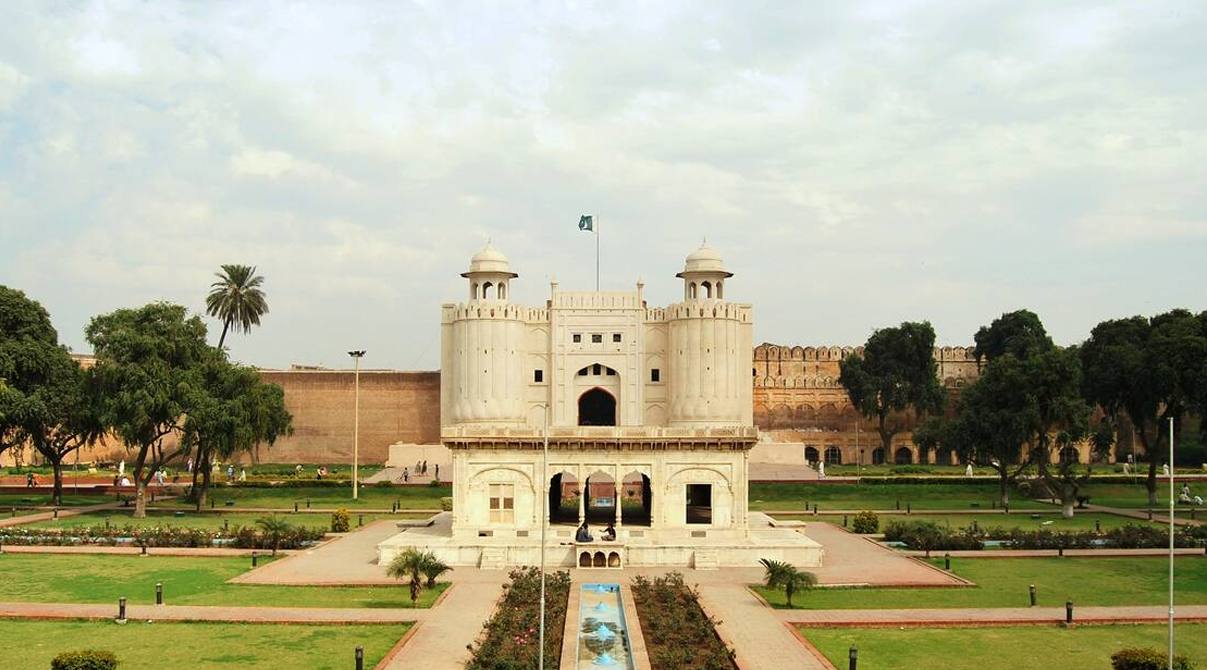
1981, the Lahore Fort and Shalamar Gardens were inscribed on the UNESCO World Heritage List due to their outstanding universal value. Both sites represent the pinnacle of Mughal architecture, art, and urban planning, reflecting the rich cultural heritage of the region. The Lahore Fort is a citadel that has been continuously inhabited and modified over several centuries, showcasing different eras of architectural styles. The Shalamar Gardens, a classic example of Mughal garden design, boasts a sophisticated water distribution system, exquisite pavilions, and intricate decorative elements.
The UNESCO World Heritage designation brings significant benefits, including international recognition, conservation support, and funding opportunities. This recognition will help preserve the sites for future generations and foster a sense of pride among the local community. Additionally, the sites will gain increased attention from researchers, historians, and art enthusiasts.
Certainly, with the prestigious title comes the responsibility to ensure the long-term conservation and management of the sites. Local authorities, in collaboration with UNESCO, are expected to develop and implement sustainable management plans, ensuring that any development or restoration projects adhere to strict guidelines. This ensures that the integrity and authenticity of the sites are maintained.
The recognition of Lahore Fort and Shalamar Gardens as UNESCO World Heritage Sites is expected to boost tourism, attracting both domestic and international visitors. The increased footfall will stimulate the local economy through the creation of jobs, increased demand for hospitality services, and the growth of tourism-related businesses. Furthermore, the sites will serve as cultural ambassadors, promoting understanding and appreciation for Pakistan’s rich history and heritage.
Related: Brief Look at Lahore – The Heart of Pakistan
Final Thoughts
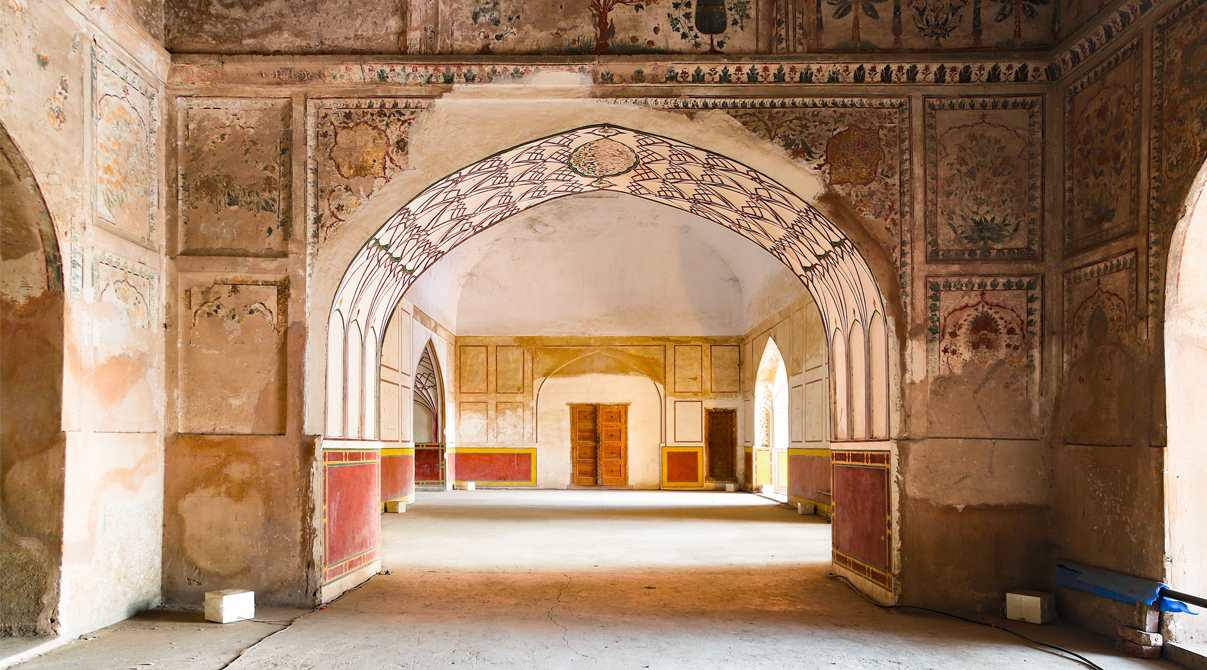
In conclusion, the Fort and Shalamar Gardens in Lahore hold immense historical and cultural significance as a UNESCO World Heritage Site. These architectural marvels, brimming with fascinating stories and intricate artwork, stand as a testament to the rich heritage of the Mughal Empire. Tourists and locals alike should make it a priority to visit and appreciate the beauty and legacy of these monuments. By doing so, we can contribute to the preservation of these unique sites and ensure that future generations can continue to marvel at the wonders of the Mughal era.